- Established 1982 -HOME: www.hiltonpond.org
THIS WEEK at HILTON POND Subscribe for free to our award-winning nature newsletter (Back to Preceding Week; on to Next Week) |
HERPS AND HUMMER BLOSSOMS As the 11 acres that comprise Hilton Pond Center have gone through vegetational succession during the past 41 years, local populations of various "herptiles" or "herps"--reptiles and amphibians--have likewise changed. (NOTE: The prefix "herp" comes from the Greek word for "creeping animal.") Since surrounding terrestrial habitats naturally evolved from old field to shrub land to mixed woods, the only near-constant is Hilton Pond itself, but even the pond's emergent and aquatic plants are somewhat different today than when we arrived back in 1982. These days floating Rootless Duckweed (Watermeal) has invaded, once omnipresent Speckled Alder shrubs overhanging pond banks have nearly disappeared, and new sedges and rushes have colonized water edges.
All text, maps, charts & photos © Hilton Pond Center We don't know for sure if changing vegetation has affected local amphibian populations, but based on their calls we'd say mostly terrestrial Gray Treefrogs (above) are more abundant these days around Hilton Pond Center, and mostly riparian Green Treefrogs (below) have skyrocketed in number. The latter phenomenon is particularly significant because Green Treefrogs are "out of range" in the Carolina Piedmont, likely introduced here from coastal areas after hitchhiking on Lowcountry landscape plants. As an indication of their successful colonization--and if the past two springs are an indication--come late May the mating chorus of Green Treefrogs will rise to near-deafening levels.
All text, maps, charts & photos © Hilton Pond Center Conversely, Fowler's Toad (below)--which 20 years ago we often heard "bleating" on summer nights from pond margins--has almost disappeared, and we seldom see it hopping around the yard at midsummer. To our knowledge, this is the only toad that occurs at the Center, although we are at the very edge of the more northerly range of the look-alike American Toad.
All text, maps, charts & photos © Hilton Pond Center Seven other anurans (tail-less amphibians) we've observed at Hilton Pond Center include Northern (Eastern) Cricket Frog, Northern Spring Peeper, Upland Chorus Frog, Bullfrog, Green Frog, Pickerel Frog, and Southern Leopard Frog. None of them are as numerous as they were years ago, reflecting a nearly worldwide die-off of amphibians--undoubtedly due in part to increased environmental toxins (fertilizers, insecticides, etc., etc., etc.) in watersheds. Since amphibians may respire in part through their skin, usually lay eggs in water, and mostly start life as aquatic larvae, they are far more susceptible to water pollution than any vertebrates other than fish.
All text, maps, charts & photos © Hilton Pond Center Incidentally, the only TAILED amphibians (caudates) encountered around Hilton Pond are Marbled Salamander (above) and Northern Dusky Salamander. We've seen each only a couple of times since 1982.
All text, maps, charts & photos © Hilton Pond Center Although salamanders and lizards superficially resemble each other, the former have moist, smooth skin while the latter are covered by dry scales. Lizards are also a mixed bag with respect to population changes here at Hilton Pond Center. In the mid-1980s--when the property was more open and an adjacent cattle farm was a 70-acre Loblolly Pine forest--we frequently observed Eastern Fence Lizards (above) and Common Ground Skinks (below); we haven’t seen a fence lizard in more than 30 years.
All text, maps, charts & photos © Hilton Pond Center By comparison, two lizard species have become increasingly plentiful at the Center. One, the Carolina Anole (male, below, flashing his red dewlap), is active even in winter on warm days. We frequently find this species inside our old farmhouse, likely because it crawls down chimneys or scoots indoors when we open a door to go in or out.
All text, maps, charts & photos © Hilton Pond Center The second big lizard is the Common Five-lined Skink, one of the so-called "blue-tailed skinks." During warm weather we see these (and the anoles) every day as they sun on the back deck. Big males of both species patrol the handrails, looking for appropriate mates while grabbing a spider or other invertebrate to snack on along the way.
All text, maps, charts & photos © Hilton Pond Center Three "blue-tailed skinks" species occur in South Carolina: The Common Five-lined Skink (adult male, above) we host at the Center--plus Broadhead Skink and Southeastern Five-lined Skink. The latter is almost identical to Common Five-lined Skink but is more likely found in sandy habitats; Broadhead Skinks occur almost statewide in South Carolina, more commonly toward the coast. Older males of all three skink species have indistinct stripes and orange-red heads.
All text, maps, charts & photos © Hilton Pond Center Blue tails are characteristic of young males and females in all three of these skinks, including the adult female Common Five-lined Skink above. Looking a little rotund (gravid, maybe?), she's perched in a sunny spot on a Flowering Dogwood just outside our office window. That particular tree is favored by other herps, too, including anoles, both local tree frogs, and a six-foot resident Eastern Black Snake. Speaking of which, in addition to frogs and toads and salamanders and lizards described above, the Hilton Pond herps inventory includes ten snake species and six turtles--but that's a story for another time. All text, maps, charts & photos © Hilton Pond Center HUMMINGBIRDS: FEW AND FAR BETWEEN Hilton Pond Center's 2022 season started slowly for Ruby-throated Hummingbirds (RTHU, adult male below), with only five new bandings through 30 April and two returns from previous years. We're not alarmed however: During 39 years of hummer study at the Center our average number of RTHU bandings by April's end is just six!
All text, maps, charts & photos © Hilton Pond Center Back in 2016--by far our most productive year with 373 RTHU bandings (average is 177)--we had only five new hummers and zero returns by the middle of May. This year, as usual, we anticipate things will pick up considerably beginning about the Fourth of July. All text, maps, charts & photos © Hilton Pond Center A COUPLE OF NATIVE SPRING HUMMINGBIRD FLOWERS It's fun to hang sugar water feeders from house eaves to bring in those newly arrived Ruby-throated Hummingbirds for closer observation outside the Center's farmhouse windows. Nonetheless, we find it much more satisfying to watch the little dynamos feeding on--and probably pollinating--nectar-rich blossoms of native flora.
All text, maps, charts & photos © Hilton Pond Center Trumpet Creeper, Campsis radicans (above), is our all-time favorite native hummingbird plant--we consider it the single most important flower for RTHU in the eastern U.S.--but it won't bear first blooms here until near the end of May. After that it will flower profusely all summer long, not stopping until September. Trumpet Creeper appeared on its own long ago at Hilton Pond Center, and we allow it to thrive. (Some gardeners consider it a weed, but we beg to differ.)
All text, maps, charts & photos © Hilton Pond Center Two early blooming spring hummer plant species are here because we brought them in. One is Red Buckeye, Aesculus pavia, of which we have a couple five-foot-tall specimens we planted years ago in front of the Center's old farmhouse. Red Buckeye grows as a shrub or small tree up to 15 feet tall and, in appropriate habits, can make a near monoculture. Our first buckeye specimen starts blooming in early April as the first hummers arrive, while the other lags behind and makes blossoms as late as mid-May.
All text, maps, charts & photos © Hilton Pond Center Red Buckeye produces a spike of 20-30 red and yellow flowers at about the same time its palmately compound leaves are opening up. Each inch-long flower is a tube (above), with nectar inside at the base where the long bill of a hummingbird can reach it. (Not many insects other than butterflies have mouthparts adapted for getting that far into a tube.) Even so, the hummer has to push pretty hard to get at the nectar, thereby picking up lots of pollen on its neck and head. That pollen--produced by five stamens visible in our photo above--then gets deposited on the single big pistil when a hummingbird visits the next flower, where fertilization occurs.
All text, maps, charts & photos © Hilton Pond Center For the past five years or so the Center's two Red Buckeyes have made nuts singly or in clusters of two or three (above) that ripen and fall to the ground in autumn. Squirrels and deer seem to avoid them, so a few nuts have germinated. This spring we're pleased to have a little colony of Red Buckeye seedlings and saplings growing up around the mother shrubs.
All text, maps, charts & photos © Hilton Pond Center Although Trumpet Creeper occurs naturally at Hilton Pond Center, its close relative Crossvine, Bignonia capreolata, is another of the few native hummingbird plants we've imported. (Mostly we just let Mother Nature take care of such things on her own.) The Crossvine in the photo above we salvaged from the throw-away pile at a plant nursery and brought it home. It didn't do much while it sat in a pot for several years, hidden beneath the deck outside our farmhouse kitchen. (Horticulture is not our strong suit.) In spring 2020 we got energetic, removed the scraggly vine from its pot, and planted it at the base of a deck pillar. It spent the past two years rejuvenating itself and twining upward, holding fast to the deck post and rail with tiny corkscrew tendrils. This week it exploded in dozens of showy blossoms, shown above.
All text, maps, charts & photos © Hilton Pond Center Crossvine's tubular two-inch red and yellow flower (above) is reminiscent of Trumpet Creeper--which makes sense since both are in the Bignoniaceae (Catalpa Family). It takes its common name from the cross-like configuration of leaves that come off the stem in groups of four. Crossvine is native to our area and might have showed up eventually around Hilton Pond--its seeds are windborne--but we're glad we imported this specimen and that it is doing so well after a long period of neglect. We hope some of its blossoms get pollinated by Ruby-throated Hummingbirds and make seeds that drift off on the wind to germinate nearby. Lots of nectar-bearing native trees, shrubs, vines, and herbs attract Ruby-throated Hummingbirds. We strongly recommend you purchase some from a native plant nursery to take home and put in the ground to supplement your sugar water feeders. For starters, you won’t go wrong with Red Buckeyes and Crossvines like those in flower now at Hilton Pond Center. All text, maps, charts & photos © Hilton Pond Center HILTON POND SUNSETS "Never trust a person too lazy to get up for sunrise
All text, maps, charts & photos © Hilton Pond Center Sunset over Hilton Pond, 29 April 2022 Catheter's out after the bird bander's emergency urinary blockage episode, so things are looking up at Hilton Pond Center. Don't forget to scroll down for lists of Hilton Pond supporters and of all birds banded and recaptured during the period. Photoshop image post-processing for this page employs |
|---|
|
"This Week at Hilton Pond" is written and photographed by Dr. Bill Hilton Jr., executive director of Hilton Pond Center for Piedmont Natural History
|
|
|
Please refer "This Week at Hilton Pond" to others by clicking on this button: |
|

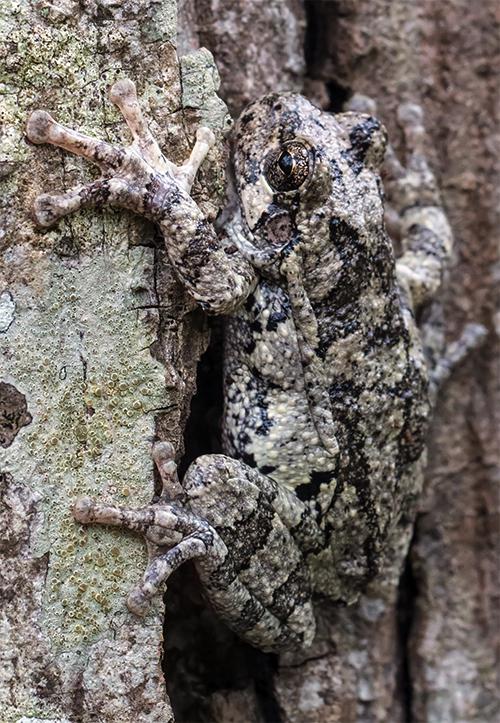
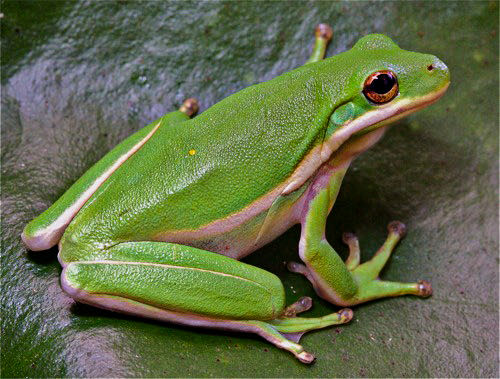


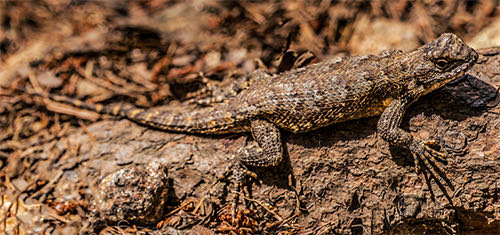
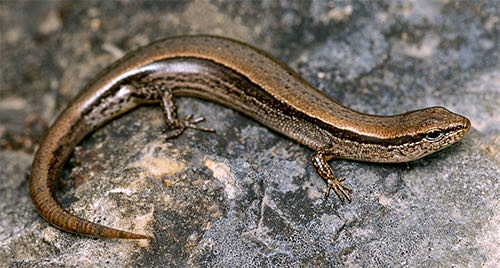
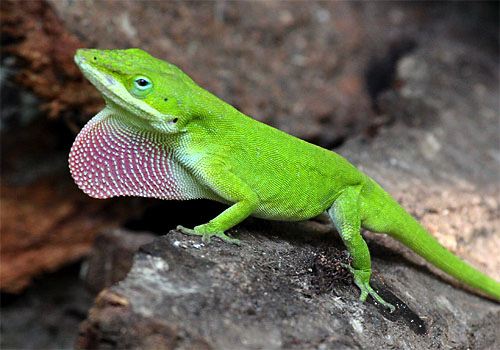

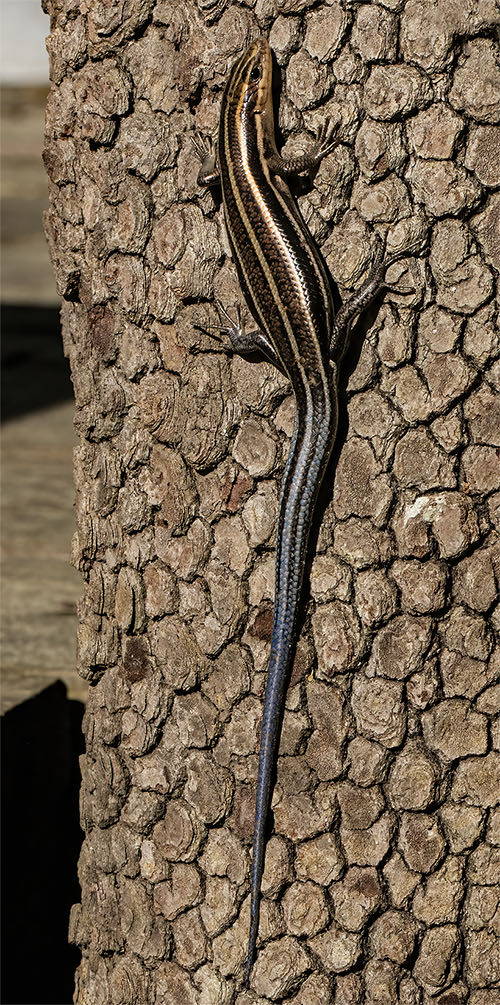
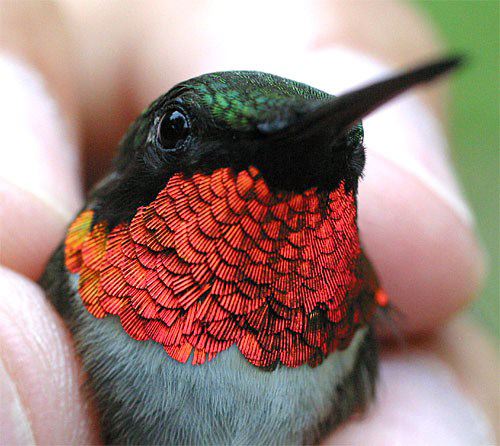

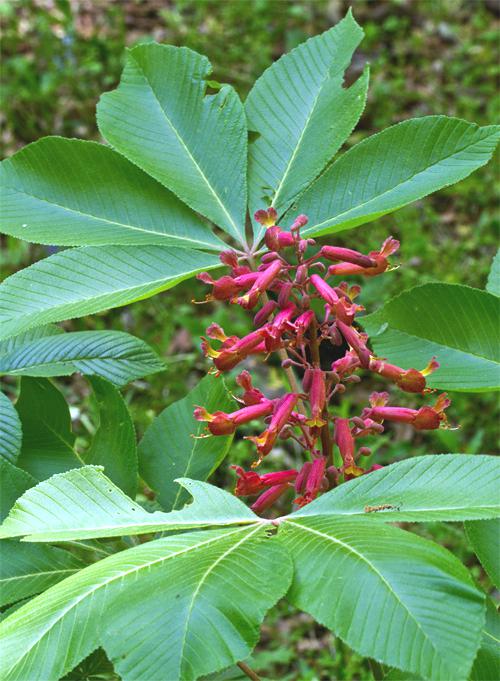


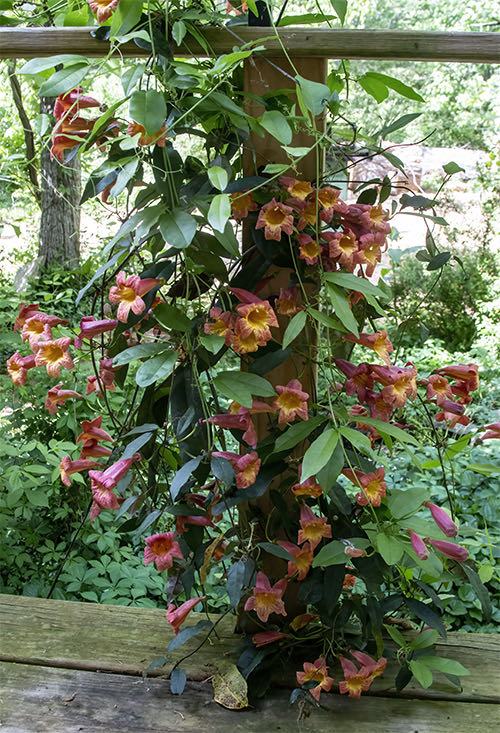
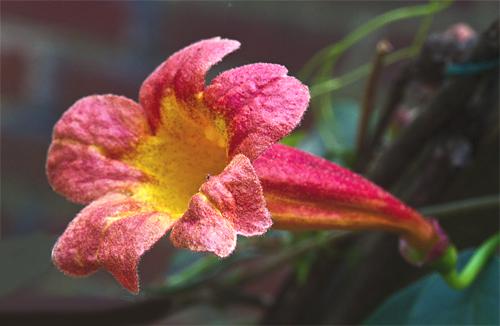
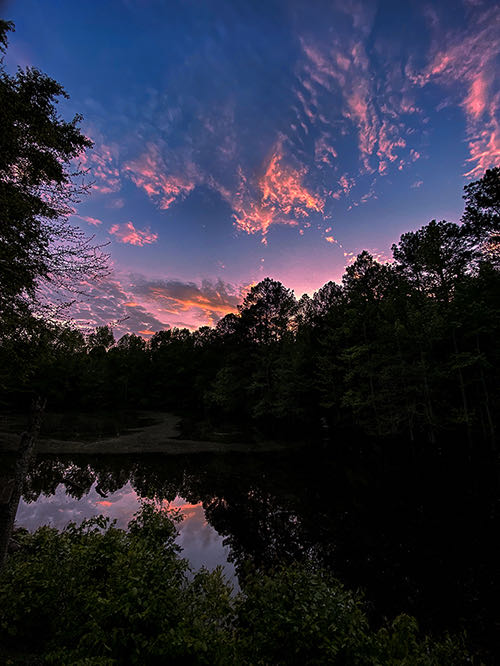









 Please report your
Please report your